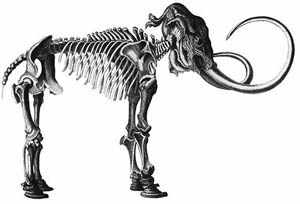 The UI Museum of Natural History received some well-deserved recognition in the May 11, 2009 issue of the Cedar Rapids Gazette. In their Homers/Gomers column, under what’s going right, The Gazette called the Museum a “NATURAL TREASURE.”
The UI Museum of Natural History received some well-deserved recognition in the May 11, 2009 issue of the Cedar Rapids Gazette. In their Homers/Gomers column, under what’s going right, The Gazette called the Museum a “NATURAL TREASURE.”
“The University of Iowa’s Museum of Natural History may be one of the state’s best-kept secrets. The museum marked its 150th year last week, and its mission as a teaching and research tool is still intact. The 1,000,000-item collection compiled by UI faculty and students during research expeditions, includes a signature giant ground sloth display from a major excavation near Shenandoah.”
Good Going Museum! (For the record, Rusty and display were constructed long before our Shenandoah discovery, but they are right about him/her being the same species.) Sloth on. Holmes.


 I cited Swedish explorer Erland Nordenskiold in a
I cited Swedish explorer Erland Nordenskiold in a  of Peru in 1975 (Pujos et al., 2007). They estimate its age at 15-25,000 years old. The humerus (upper arm bone) matches one recovered by Swedish explorer, Erland Nordenskiold, in 1905 from a cave in the Andes called Casa del Diablo. They named the new species Diablotherium nordenskioldi and placed it in the Megalonychidae family, making it a close relative of our own Megalonyx. Nordenskiold suspected he had something special, and now it’s confirmed– Diablotherium was fully arboreal (tree-dwelling) and apparently as well-adapted to life off the ground as modern tree sloths. The discovery, the first species of this type ever found, underscores the tremendous adaptability of the ground sloths, especially the Megalonychidae.
of Peru in 1975 (Pujos et al., 2007). They estimate its age at 15-25,000 years old. The humerus (upper arm bone) matches one recovered by Swedish explorer, Erland Nordenskiold, in 1905 from a cave in the Andes called Casa del Diablo. They named the new species Diablotherium nordenskioldi and placed it in the Megalonychidae family, making it a close relative of our own Megalonyx. Nordenskiold suspected he had something special, and now it’s confirmed– Diablotherium was fully arboreal (tree-dwelling) and apparently as well-adapted to life off the ground as modern tree sloths. The discovery, the first species of this type ever found, underscores the tremendous adaptability of the ground sloths, especially the Megalonychidae.